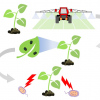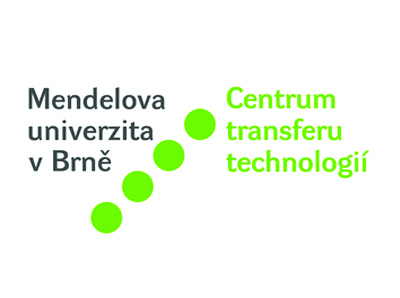Spray protectant against bacterial and fungal diseases
Technology description
| The name of the technology: | Spray protectant against bacterial and fungal diseases |
|---|---|
| Challenge: | Currently, protective fungicides and bactericides based on copper are commonly used to protect agricultural crops, but they are applied in the form of salts, which are dissolved and further washed away from the plant and transferred to the soil where they can affect groundwater quality. Therefore, the application must be repeated regularly and the total amount of copper used, which is needed for plant protection to prevent economic losses is enormous. Another aspect is the already mentioned, the contamination of the soil and subsequently of groundwater isn't also negligible. Copper has been known for centuries for its bactericidal and fungicidal properties, and it isn't possible to completely avoid it. The only possibility to completely avoid copper from the protection of plants is an application of substances that are associated with more negative consequences than benefits. |
| Description: |
Our plant protection material consists of several components. As already mentioned, copper cannot be omitted for its effects, but it is possible to use it in several times smaller amounts and use it more smartly. We use copper in the form of nanoparticles because nanoparticles are known to be more effective at lower concentrations than they would be in bulk due to their favorable volume to surface ratio. Another part of our material are zinc nanoparticles. Like copper, zinc is a naturally occurring element in both plants and animals. Some microorganisms are more sensitive to zinc and therefore in some cases it is more effective than copper. If zinc accompanies copper, it creates a synergistic effect, when both elements are needed in noticeably smaller amounts than if they were applied separately. The last and absolutely essential part of our material is graphene oxide, which is a network of carbon atoms in a hexagonal lattice that carries oxygen functional groups on its surface. Copper and zinc nanoparticles are bonded onto graphene oxide using this functional groups. Although the surface area of graphene oxide is several tens of micrometers, its thickness is in units of nanometers. In our material, graphene oxide plays not only function as a nanoparticle carrier, but in particular can adhere to the surface of the plants and remain attached to it for a long time. During this time, graphene oxide, which, unlike copper and zinc nanoparticles, is in direct contact with plants, does not restrict the plant and at the same time prevents nanoparticles from being washed away. Therefore, copper and zinc ions are gradually released from the nanoparticles and the washing away of the nanoparticles is prevented because they are held by the graphene oxide. Therefore, it is not necessary to apply the protection in short intervals, and the total amount of metals applied is also reduced thanks to copper and zinc in the form of nanoparticles. |
| Commercial opportunity: |
The primary goal of commercial use is agricultural, or plant protection use as a more environmentally friendly method of protection. Our material makes it possible to prevent economic losses caused by bacterial and fungal pathogens with less copper consumption for plant protection and an order of magnitude lower burden on the environment and especially soil and groundwater. Reducing the use of chemical protection (including reducing the use of copper) is a long-term goal in the EU and globally. So far, there are no alternative methods of reducing the use of copper compounds. |
| IP protection status: |
Czech patent application PV 2020-287 and PCT application PCT/EP2021/063087 |
| Development status: |
Clinical trials |
| Partnering strategy: | Collaboration licensing |
| More information: | We are in testing phase (in house and by independent body) with first possible customer. Still there are applications, not covered by this partnership. |
| Images: | |
| Categories: | Agriculture Chemistry |
| Owner of a technology: | Mendel University Brno |

